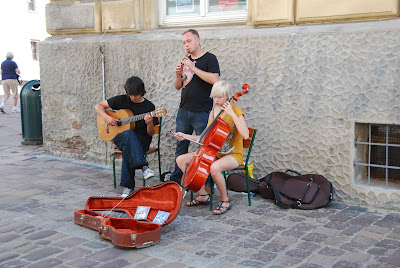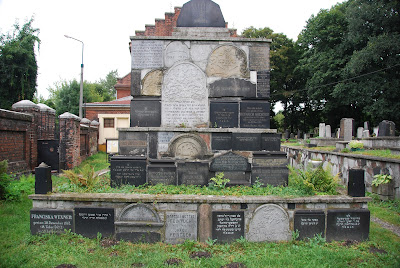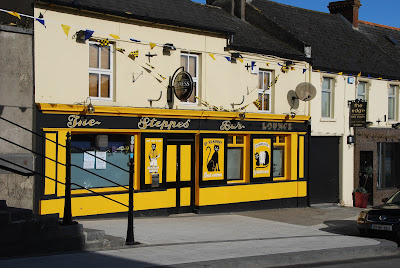I have hesitated in blogging about the Auschwitz-Birkenau part of my recent trip to Poland, mostly because I didn't know quite what to say. Furthermore, so much has been written about this absolutely dark aspect of human history that I know there is nothing new I could say. However, I think it is critical to not forget what happened there during World War II, which is why I decided to share a bit of this experience.
Many months ago when I was planning what we (Habitat for Humanity team) would do during a few days after conclusion of our project, it was clear to me that spending time in southern Poland had to include time at Auschwitz. Arrangements were made for us to have a guided tour, rather than wondering around on our own.
Background
I think it's safe to say that most of the world knows about Auschwitz to some extent. It is one of the most graphic symbols of state terrorism, systematic genocide and the Holocaust. During World War II, much of Poland came under German occupation and in 1940 they opened this concentration camp on the outskirts of the city of Oswiecim. The Nazis changed the name of the city to Auschwitz.
The original camp was called Auschwitz I and was expanded over the subsequent years to include Birkenau (Auschwitz II) and Monowitz (Auschwitz III). In addition to these three camps, there were more than 40 smaller or sub-camps. In the early stages of Auschwitz, the Nazis were meticulous in keeping records on the prisoners. This stopped, however, when the number of people being sent to Auschwitz-Birkenau got so large that they could not keep up with the record keeping. Birkenau was build to accommodate the increased volume of prisoners.
While called concentration camps, Auschwitz-Birkenau were death camps.
Initially, Poles were imprisoned and then died in Auschwitz. Poles were soon joined by Soviet prisoners of war, Roma (Gypsies) and prisoners of other nationalities. By the start of 1942, the camp became the scene of the largest mass murder in human history as the Nazis moved to exterminate all Jews in Europe. Upon arrival at Auschwitz, the majority of Jews - men, women and children - were sent directly to their death in the Birkenau gas chambers.
From different parts of Nazi-occupied Europe, it is estimated that the following number of people were sent to the camp:
- 1.1 million Jews
- almost 150,000 Poles
- 23,00 Roma from several European countries
- more than 15,000 Soviet prisoners of war
- more than 10,000 prisoners from other countries
The majority of these people perished in Auschwitz-Birkenau.
When expecting the war was coming to an end, the SS began to dismantle or demolish the gas chambers and crematoria, along with many buildings. They also burned most of the records.They evacuated prisoners who were able to march with them back to Germany. When the Soviet Red Army liberated the camp in January 1945, about 7,000 people remained in the camp.
Personal Impact
I won't go into much more in this blog, except to mention a few things that I found especially troubling. In one of the displays at Auschwitz, there was a mound of eye glasses that had been taken from prisoners (see picture below). The thought of these representing so many people was and still is very unsettling. For others in our group, it was other items taken from prisoners.
In a section of one building, we walked along a hall that had several pictures of men who had been brought to the camp for whatever awaited them. Each photo indicated the date of arrival and date of death. In all cases, it was no more than a few months at most and in many cases it was simply a couple of days.
The size and scale of the camp, especially Birkenau, was massive and much greater than I ever envisioned. Essentially, it was set up like a factory to house thousands of people in horrific conditions before they were exterminated.
Adjacent to the ruins of the gas chambers and crematoria at Birkenau, there is a memorial dedicated to the victims. Important, but emotional experience to spend even a few minutes here.
The remainder of the bog will consistent of pictures.
Entrance to Auschwitz I - sign says "work will make you free"
Death Wall (Auschwitz) - SS shot thousands of prisoners here in 1941-1943
Crematorium at Auschwitz I
Birkenau
Birkenau
Birkenau - less than 1/4 of the camp
Birkenau - ruins of cremtorium and one gas chamber
Memorial at Birkenau





















































